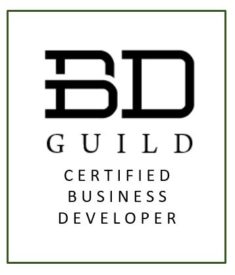 Hi everyone! Time is flying. I’m already looking forward to the fourth CBD Module on August 21st. This post is covering Module 2 which was held on June 19th…aside from the coursework, the whole CBD experience has impacted me more than I could have ever expected. Before I go into covering the topics discussed, which were Market Research and Strategic Planning, I feel compelled to tell you guys…I have generated business opportunities just by attending the CBD classes. So even if I completely tuned out like an 80’s teen movie star for each of these half day sessions, I still gained tremendous value from the time I have spent so far. But you all know, I am more like Elle Woods in class! That’s the beauty of BD. Long game relationships, maintaining genuine interest in the interests of others, remaining positive, and following up all make a big difference in the value obtained from professional development.
Hi everyone! Time is flying. I’m already looking forward to the fourth CBD Module on August 21st. This post is covering Module 2 which was held on June 19th…aside from the coursework, the whole CBD experience has impacted me more than I could have ever expected. Before I go into covering the topics discussed, which were Market Research and Strategic Planning, I feel compelled to tell you guys…I have generated business opportunities just by attending the CBD classes. So even if I completely tuned out like an 80’s teen movie star for each of these half day sessions, I still gained tremendous value from the time I have spent so far. But you all know, I am more like Elle Woods in class! That’s the beauty of BD. Long game relationships, maintaining genuine interest in the interests of others, remaining positive, and following up all make a big difference in the value obtained from professional development.
The two topics covered in this module are connected in a way that has always fascinated me as a data-driven marketer. Ted Ritter, principal at LMI360, discussed the importance of implementing best practices in market research to carve a defined path for business development efforts. Without the research to support confident decision making, and a strategic plan that defines the approach…BD roles scramble. When there’s no plan, there is usually no budget either. Almost every decision becomes reactive in these scenarios, leaving leadership wondering if YOU as a business developer are a forward-thinking asset or a recurring surprise bill. You just had the biggest year in the company’s history. How did that mindset happen?? These situations can be avoided largely if you climb the hill of leadership buy-in. You can use your marketing and administrative resources to gather illustrative data for you, maybe from your CRM system, or if you’re lone-wolfing it like I have been in the past, you can complete some preliminary pursuit and budgeting ideas and present them as an individual capture plan. You have now defined your efforts as dedicated to an outcome, which puts you on the team running toward the goal. You can commit to the benchmarks outlined in your own strategic plan if leadership is slow to take the concept firm-wide. Bottom line, even without support you as a BD ROCKSTAR can take the time to hold executive planning sessions, complete a SWOT analysis, send satisfaction surveys to your clients, review Google Analytics activity, review email open and social engagement rates for your firm, research your competition, outline a budget, and benchmark achievements…even if just for you. Yes, you can.
One market research/strategic planning story in particular stood out to me after attending this session. Have you ever heard of Luxottica? They’re the world’s largest manufacturer of sunglasses. You’ve never heard of them, because they are the international mega-factory provider for ALL the world’s sunglass brands. Everything from Balenciaga to the dollar store shades. But all the world’s sunglasses also have their own brands, just like denim jeans are largely made from the same factories, in the same foreign countries, from the same denim, but receive different labels. Luxottica was not content on being the world’s largest sunglasses manufacturer, even though they were producing over 75 million pairs a year. They saw the overall sunglass market as having a 100 billion-dollar economic impact, and their piece of the pie was coming in at a measly 9 billion. Research and strategic planning efforts on a scale that my brain cannot fathom led the company on an Amazon-style mission to conquer the eye coverings of all humanity. They purchased the world’s mega sunglass brands themselves, including Ray Ban and Oakley, then realized there are people who really dig nice glasses, including those whose lives depended on them. So, while everyone was celebrating a resurgence right after the recession, they purchased the world’s mega eyewear suppliers too. These included Pearle Vision, Sunglass Hut, and Lens Crafters. Let that sink in…
While competition struggled to maintain their own brands, Luxottica responded to what seemed like no-brainer business opportunities that were made a confident endeavor based on solid market research. If they could look past the horizon and instead of branding themselves as the eyewear manufacturer of the century, they could gain profit in additional phases of the service. AEC contractors can also utilize this approach by providing a multitude of services to a client, but rarely do they dabble in the building product manufacturing phase, or maybe staff various niche consultants full time because the initial costs are so steep. What if, based on solid research, patience, and strategy, you could completely corner delivering an emerging AEC product or service? My closing comment is yes you can, but make a plan!